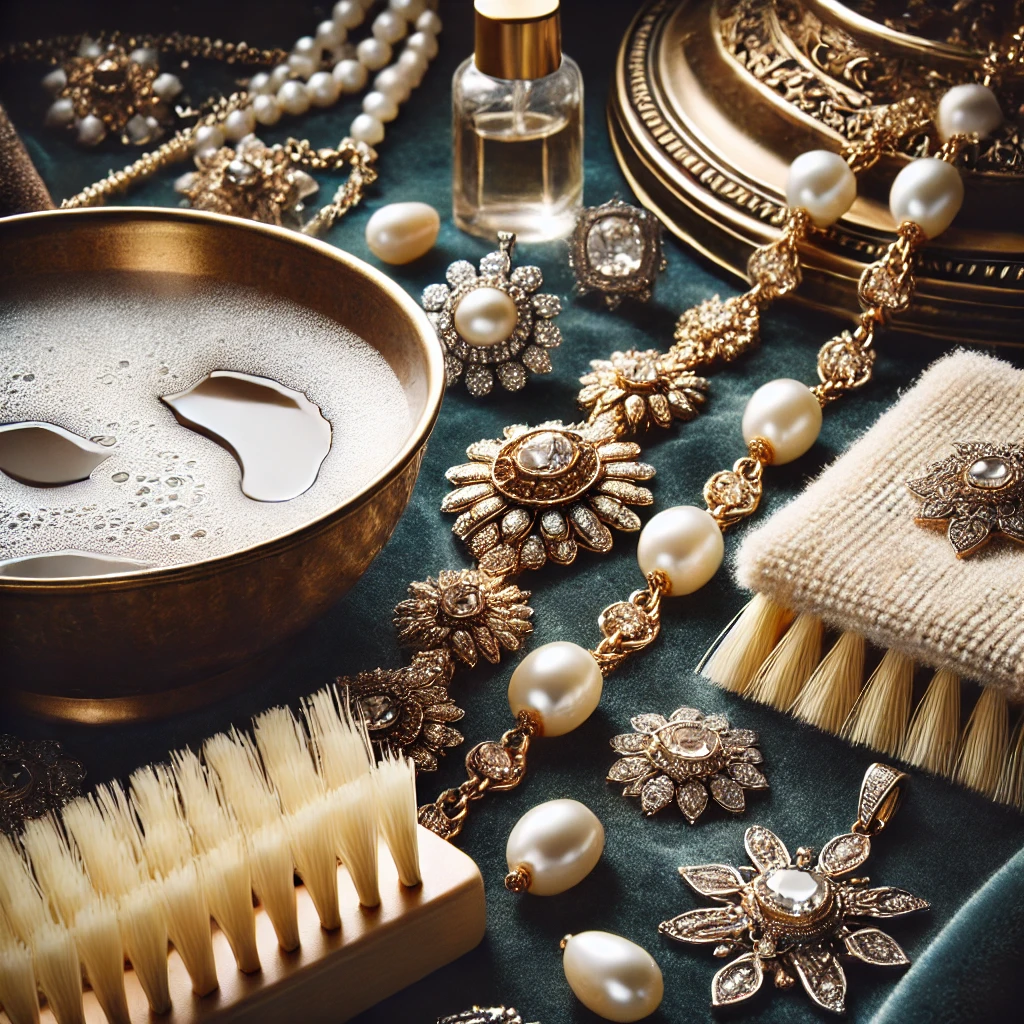How to Clean Royal Jewelry: A Comprehensive Guide
Royal jewelry holds an esteemed place in history, culture, and personal collections. Known for their exquisite craftsmanship and opulent materials, these treasures require meticulous care to maintain their brilliance and longevity. Whether you own antique heirlooms or modern high-end jewelry, proper cleaning and preservation are essential. Here’s a detailed guide on how to clean royal jewelry without compromising its value or integrity.
Understanding Royal Jewelry Materials
Royal jewelry is often crafted from a combination of precious metals, gemstones, pearls, and other rare materials. Each component requires specialized care:
- Gold and Platinum: Known for their durability and resistance to tarnish, these metals still require gentle cleaning to preserve their luster.
- Diamonds: While extremely hard, diamonds attract grease and oils, diminishing their brilliance.
- Colored Gemstones: Emeralds, rubies, and sapphires have specific vulnerabilities. For instance, emeralds often contain natural inclusions and treatments that necessitate extra care.
- Pearls: Organic and delicate, pearls are highly susceptible to scratches, chemicals, and drying out.
- Enamel and Other Decorations: Intricate enamel work or other embellishments can be fragile and prone to damage if mishandled.
Understanding the materials ensures you apply the appropriate cleaning techniques and avoid unintended damage.
General Precautions
Before diving into cleaning, consider these critical precautions:
- Consult a Professional: For extremely valuable or antique pieces, consult a jeweler or conservator before attempting any cleaning.
- Inspect the Jewelry: Check for loose stones, cracks, or weak settings that could worsen during cleaning.
- Avoid Harsh Chemicals: Strong chemicals can damage metal finishes, erode gemstones, or discolor pearls.
- Use Gentle Tools: Opt for soft-bristle brushes, lint-free cloths, and non-abrasive sponges.
- Work in a Safe Area: Clean over a soft surface or use a strainer to prevent losing small parts or stones.
Cleaning Techniques for Different Materials
Gold and Platinum
- Supplies Needed:
- Mild dish soap
- Warm water
- Soft-bristle toothbrush
- Microfiber cloth
- Steps:
- Mix a few drops of mild dish soap in warm water.
- Soak the jewelry for 10-15 minutes to loosen dirt.
- Gently scrub with a soft toothbrush, focusing on crevices.
- Rinse thoroughly under lukewarm water.
- Dry with a microfiber cloth and polish gently to restore shine.
Diamonds
- Supplies Needed:
- Ammonia solution (1 part ammonia, 6 parts water)
- Soft-bristle toothbrush
- Lint-free cloth
- Steps:
- Immerse the diamond jewelry in the ammonia solution for 5-10 minutes.
- Brush gently to remove oils and grime.
- Rinse under cold water and dry with a lint-free cloth.
Note: Avoid ammonia for pieces with fragile settings or other delicate components.
Colored Gemstones
- Supplies Needed:
- Mild soap
- Lukewarm water
- Soft cloth
- Steps:
- Soak gemstones in soapy water for 5-7 minutes.
- Wipe gently with a soft cloth to clean.
- Rinse with lukewarm water and pat dry.
Tip: Avoid soaking porous stones like emeralds for extended periods, as this can weaken treatments.
Pearls
- Supplies Needed:
- Soft damp cloth
- Mild soap (optional)
- Soft towel
- Steps:
- Wipe pearls gently with a damp cloth after each use.
- If needed, use a cloth dipped in mild soapy water for deeper cleaning.
- Rinse the cloth and wipe again to remove residue.
- Lay flat on a soft towel to air dry.
Warning: Never soak pearls, as this can damage the nacre.
Enamel and Other Decorations
- Supplies Needed:
- Soft microfiber cloth
- Warm water
- Steps:
- Dampen a cloth with warm water and wipe gently.
- Avoid soaking to prevent water damage.
- Dry immediately with a dry, soft cloth.
Ultrasonic Cleaners: Use with Caution
Ultrasonic cleaners use high-frequency sound waves to dislodge dirt. While effective for certain materials like diamonds and gold, they’re unsuitable for:
- Soft stones (e.g., opals, pearls, turquoise)
- Fragile settings
- Enamel or treated gemstones
Always verify with a professional before using an ultrasonic cleaner on royal jewelry.
Storage and Maintenance Tips
- Proper Storage:
- Use individual soft pouches or lined jewelry boxes to avoid scratches.
- Store pearls separately to prevent tangling or abrasion.
- Regular Inspections:
- Check settings and clasps for wear and tear.
- Tighten loose stones promptly.
- Avoid Exposure:
- Remove jewelry before swimming, bathing, or using harsh chemicals.
- Avoid direct contact with perfumes, lotions, or hairsprays.
- Periodic Professional Cleaning:
- Schedule professional cleanings every 6-12 months to maintain peak condition.
Preserving the Legacy
Caring for royal jewelry isn’t just about maintaining its appearance; it’s about preserving history, craftsmanship, and sentimental value. With proper cleaning and storage, these pieces can continue to shine brilliantly for generations to come. Treat your royal treasures with the respect they deserve, and they will reward you with timeless elegance and beauty.



